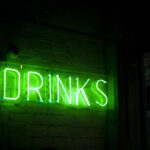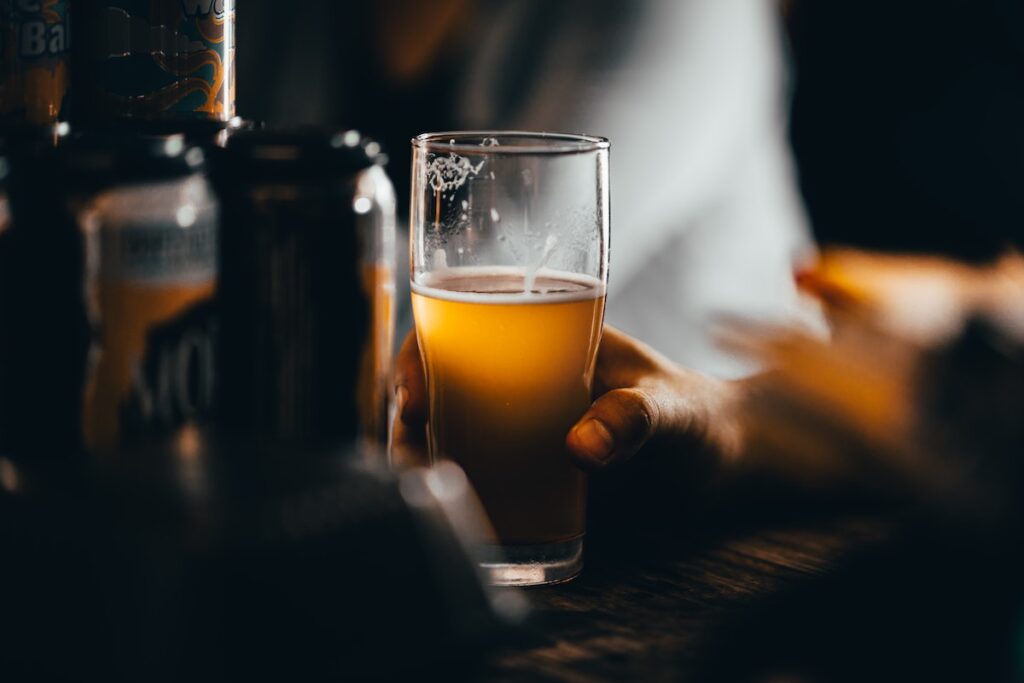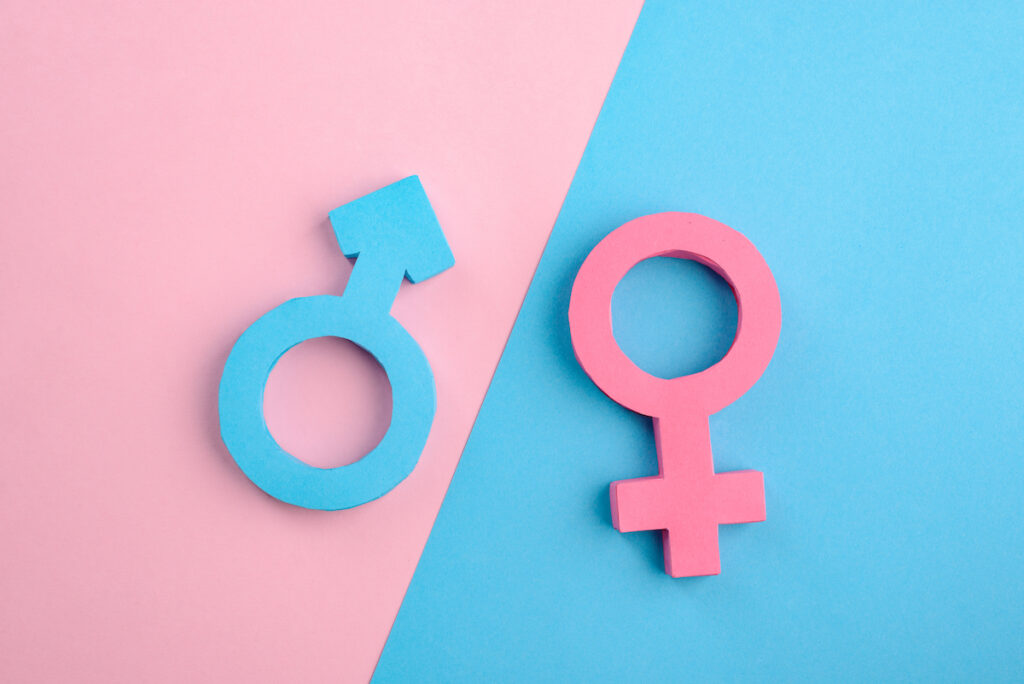
It has been reported in many studies that lifetime alcohol use disorders are frequently comorbid with mental health disorders, including depression and anxiety. Prevalence rates of lifetime alcohol use disorders are high. Approximately 9/100 people worldwide have a lifetime alcohol use disorder, of which 43.9% have at least one mental health disorder (Glantz M. et al, 2020).
The presence of lifetime alcohol use disorder in bipolar disorder (BD) is associated with impaired psychological, social and cognitive functioning in everyday life (Xia Y. et al, 2020; Levy B. et al, 2012). Individuals with BD who drink potentially damaging amounts of alcohol are more likely to experience a relapse in depression, manic symptoms, poor quality of life and attempt suicide (Xia Y. et al, 2020).
Little research looks at the relationship between heavy alcohol consumption and clinical characteristics of BD, such as suicide attempts and eating disorders. Inconsistencies exist across the limited published research. A preliminary study conducted in Canada found that individuals in a manic episode consumed more alcohol (Goldstein B. et al, 2006). Whereas other researchers have found levels of alcohol consumption were not linked with characteristics of bipolar disorder (Van Zaane, 2010). These differences highlight the need for further research, with larger samples to gain a clearer picture of this relationship.
Gordon-Smith and colleagues (2020) aimed to address these discrepancies by examining:
- The relationship between heavy regular alcohol consumption and lifetime clinical characteristics of BD (e.g., rapid cycling, anxiety disorders, eating disorders).
- Whether there are gender-specific differences in clinical characteristics associated with BD.

People with comorbid lifetime alcohol use disorder and bipolar disorder are at increased risk of attempting suicide.
Methods
Between 2001 and 2013, the authors recruited individuals who had been diagnosed with bipolar type I disorder and have regularly consumed alcohol.
Inclusion criteria:
- Be 18 years or older;
- Mood symptoms onset before the age of 65 years;
- UK white ethnicity.
Exclusion criteria:
- Experienced affective illness as a result of alcohol or substance dependence;
OR
- Experienced affective illness secondary to medical illness or medication.
This study comprised a review of psychiatric and general practice case notes, medical notes and a semi-structured interview. The interview consisted of two assessments: the Schedule for Clinical Assessments in Neuropsychiatry (Wing J. et al, 1990) and the Global Assessment Scale (Endicott J. et al, 1976). Lifetime diagnoses were made according to DSM-IV and ratings made for key clinical variables (age of onset, suicidal behaviour). Researchers assessed other psychiatric disorders by asking participants to provide self-reports of any formal clinical diagnosis.
The authors measured alcohol consumption by asking participants how much alcohol in units they had consumed per week at their heaviest ever regular use. Ordinal regression was used to analyse the relationship between alcohol consumption levels and each clinical characteristic.
Results
1,876 participants (1,203 females; 673 males) with bipolar disorder (BD) and lifetime alcohol consumption were included in the final analyses. The results were as follows.
The proportion of heavy alcohol consumption in people with bipolar disorder
- Interestingly a staggering 71% of women and 88% of men with BD exceeded the UK recommended alcohol consumption guidelines per week (14 units)
- Furthermore, 52% of women and 74% of men with BD consumed double the recommended alcohol per week (30 units).
Gender-specific patterns of clinical correlates
- Men and women with increasing alcohol consumption levels were 1.48 and 1.82 times more likely to have attempted suicide than individuals with lower alcohol levels, certainly a concerning finding
- Men and women who had more regular alcohol at any point in their lifetime were 1.88 and 1.89 times more likely to have experienced rapid cycling than individuals who had consumed less alcohol.
No additional clinical correlates were observed in men with bipolar disorder.
Clinical correlates observed in women only
Higher levels of alcohol consumption were positively associated with:
- Episodes of depression (OR 1.35)
- Mania per illness year (OR 1.30)
- Less impairment in functioning during the worst episode (OR 1.02)
- Comorbid panic disorder (OR 2.16)
- Eating disorder (OR 2.37)
Higher levels of alcohol consumption were negatively associated with:
- Psychiatric admissions (OR 0.51).

According to this research, drinking too much alcohol predicts clinical characteristics of bipolar disorder in both men and women, including suicide attempt and experiences of rapid cycling.
Conclusions
This research provides some insightful findings in that heavy alcohol use predicts the course of bipolar disorder (BD) (Gordon‐Smith et al, 2020). Despite some clinical characteristics being gender-specific (e.g. eating disorders), “more severe and unstable BD illness course” were observable across both men and women. Furthermore, the authors found that a significant proportion of people with BD exceeded the recommended alcohol guidelines, concluding that “collecting quantifiable data on the amount of alcohol consumption in future BD samples” should be prioritised.

There is a need to collect measurable data on alcohol consumption in people with bipolar disorder in future studies.
Strengths and limitations
This study has methodological strengths, such as having a large sample of 1,876 people. The risk of selection bias was also reduced, with participants recruited both systematically (mental health teams) and non-systematically (local media). Importantly observer bias was minimised as two members from the research team blindly rated any unclear diagnoses or clinical ratings, increasing inter-rater reliability.
However, this study used a cross-sectional design; therefore, the causal direction of the relationship between the clinical characteristics of bipolar disorder (BD) and alcohol consumption could not be determined. Previous research has highlighted that during a manic episode, certain reckless behaviours could be increased due to the dysregulated behavioural activation system (Wright K. et al, 2008). Therefore, heavy alcohol consumption may just be an additional side product of bipolar disorder. On the other hand, chronic alcohol use may disrupt circadian rhythms (our internal biological clock which responds to environmental cues such as daylight) causing the onset of BD (Meyrel M. et al, 2020). Disruptions of circadian rhythms have been significantly related to BD. Future research could use prospective designs, to get a sense of the direction of the relationship that this study is lacking.
Furthermore, not all confounding factors were addressed, including ethnicity, physical comorbidities, family history of alcohol use disorder, family history of suicide and early life adversities.

The study cannot determine a causal direction of the relationship, so it’s difficult to infer whether bipolar disorder causes heavy alcohol use or whether heavy alcohol use causes bipolar disorder.
Implications for practice
Having the knowledge that heavy alcohol use predicts the course of BD, could lead to improved provisions in mental health services. Most importantly, the most severe symptoms of BD such as suicide attempts could be prevented by observing alcohol consumption amongst those with bipolar disorder. This research provides strong evidence that alcohol consumption should be moderated and gender-specific interventions may prove more beneficial than commonly used interventions, such as targeting comorbid eating disorder amongst women with BD.

The researchers emphasise the importance of gender-specific interventions and routinely screening for the level of alcohol use among individuals with bipolar disorder to prevent worse mental health outcomes and suicide.
Statement of interests
None.
Links
Primary paper
Gordon‐Smith K, Lewis KJ, Vallejo Auñón FM, Di Florio A, Perry A, Craddock N, Jones I, Jones L. (2020). Patterns and clinical correlates of lifetime alcohol consumption in women and men with bipolar disorder: Findings from the UK Bipolar Disorder Research Network. Bipolar disorders. 2020 Nov;22(7):731-8.
Other references
Endicott J, Spitzer RL, Fleiss JL, Cohen J.(1976). The Global Assessment Scale: A procedure for measuring overall severity of psychiatric disturbance. Archives of general psychiatry. 1976 Jun 1;33(6):766-71.
Glantz MD, Bharat C, Degenhardt L, Sampson NA, Scott KM, Lim CC, Al-Hamzawi A, Alonso J, Andrade LH, Cardoso G, De Girolamo G et al. (2020). The epidemiology of alcohol use disorders cross-nationally: Findings from the World Mental Health Surveys. Addictive Behaviors. 2020 Mar 1;102:106128.
Goldstein BI, Velyvis VP, Parikh SV. (2006). The association between moderate alcohol use and illness severity in bipolar disorder: a preliminary report. Journal of Clinical Psychiatry. 2006 Jan 1;67(1):102-6.
Grootenboer EM, Giltay EJ, van der Lem R, van Veen T, van der Wee NJ, Zitman FG. (2012). Reliability and validity of the Global Assessment of Functioning Scale in clinical outpatients with depressive disorders. Journal of evaluation in clinical practice. 2012 Apr;18(2):502-7.
Levy B, Manove E, Weiss RD. (2012). Recovery of cognitive functioning in patients with co-occurring bipolar disorder and alcohol dependence during early remission from an acute mood episode. Annals of Clinical Psychiatry. 2012 May;24(2):143.
Meyrel M, Rolland B, Geoffroy, PA. (2020). Alterations in circadian rhythms following alcohol use: A systematic review. Progress in Neuro-Psychopharmacology and Biological Psychiatry, 99, p.109831.
Rijnders CT, Van den Berg JF, Hodiamont PP, Nienhuis FJ, Furer JW, Mulder J, Giel R. (2000). Psychometric properties of the schedules for clinical assessment in neuropsychiatry (SCAN-2.1). Social psychiatry and psychiatric epidemiology. 2000 Sep 1;35(8):348-52.
Van Zaane J, Van Den Brink W, Draisma S, Smit JH, Nolen WA. (2010).The effect of moderate and excessive alcohol use on the course and outcome of patients with bipolar disorders: a prospective cohort study. The Journal of clinical psychiatry. 2010 Jan 26;71(7):885-93.
Wing JK, Babor T, Brugha TS, Burke J, Cooper JE, Giel R, Jablenski A, Regier D, Sartorius N. (1990). SCAN: schedules fonr clinical assessment in neuropsychiatry. Archives of general psychiatry. 1990 Jun 1;47(6):589-93.
Wright KA, Lam D, Brown RG. (2008). Dysregulation of the behavioral activation system in remitted bipolar I disorder. Journal of Abnormal Psychology, 117(4), p.838.
Xia Y, Ma D, Perich T, Hu J, Mitchell PB. (2020). Demographic and Clinical Differences Between Bipolar Disorder Patients With and Without Alcohol Use Disorders. Frontiers in psychiatry. 2020 Sep 3;11:910.
Photo credits
- https://ledlightstation.com/
- Photo by Josh Olalde on Unsplash
- Photo by Stéphan Valentin on Unsplash
- Photo by Kelsey Chance on Unsplash
